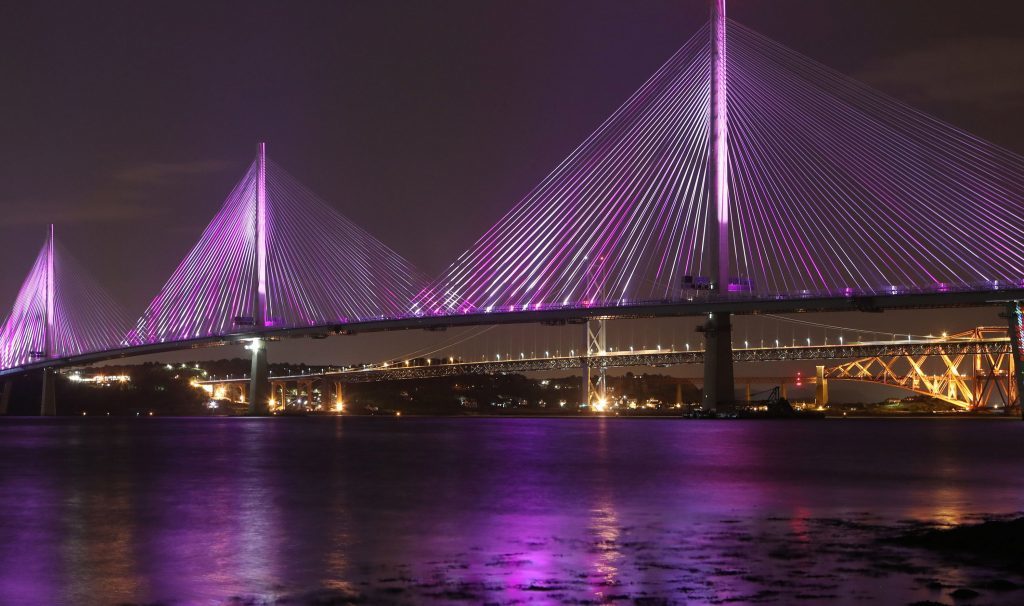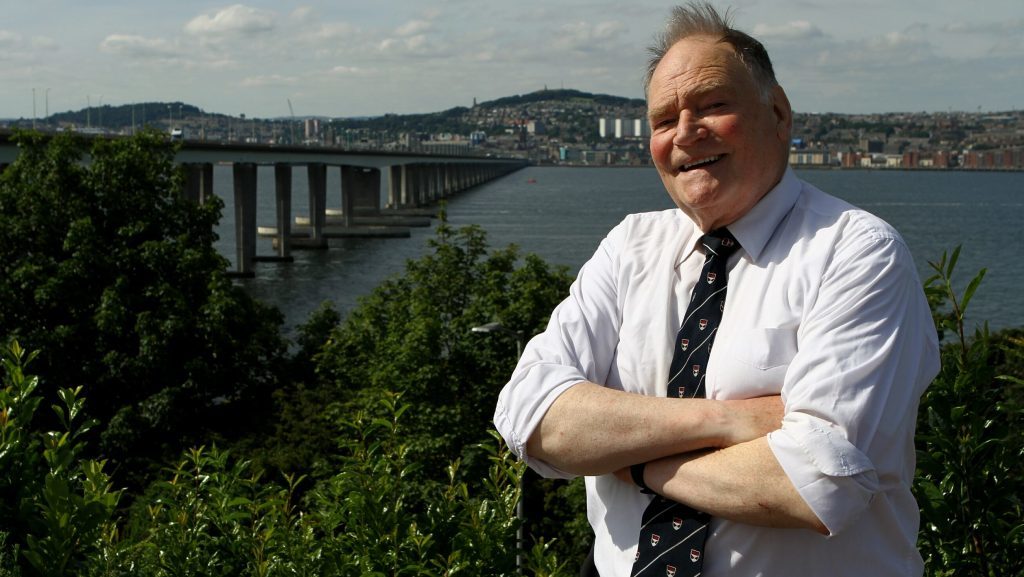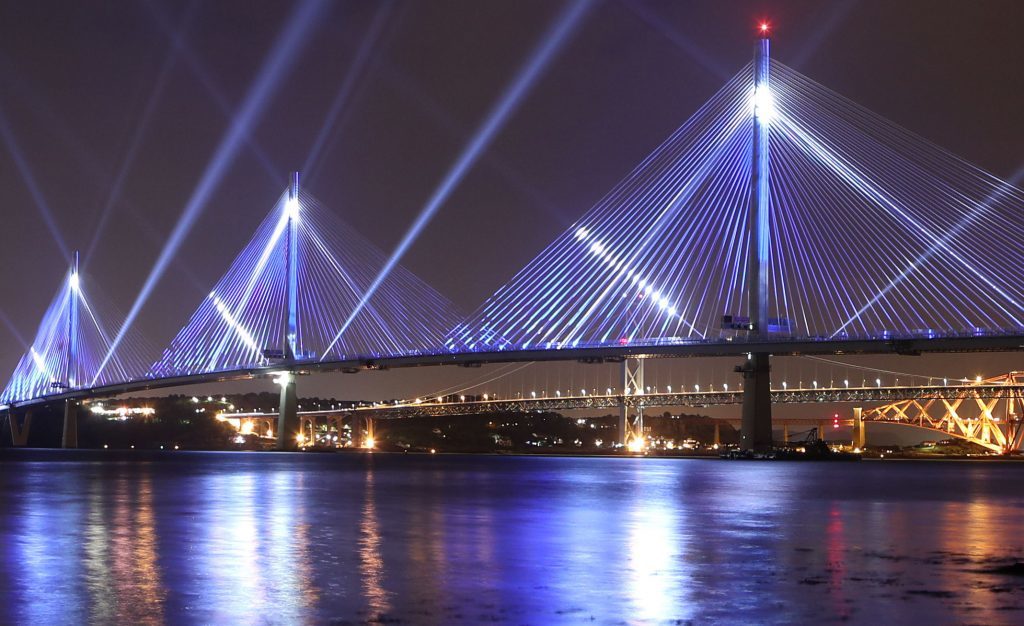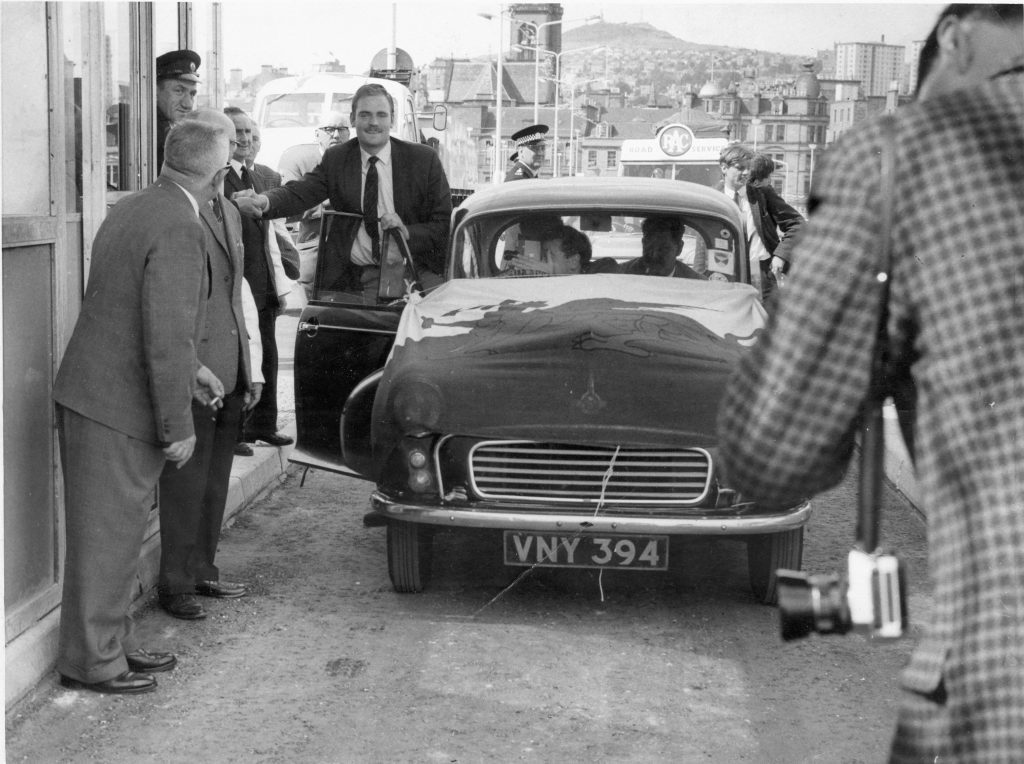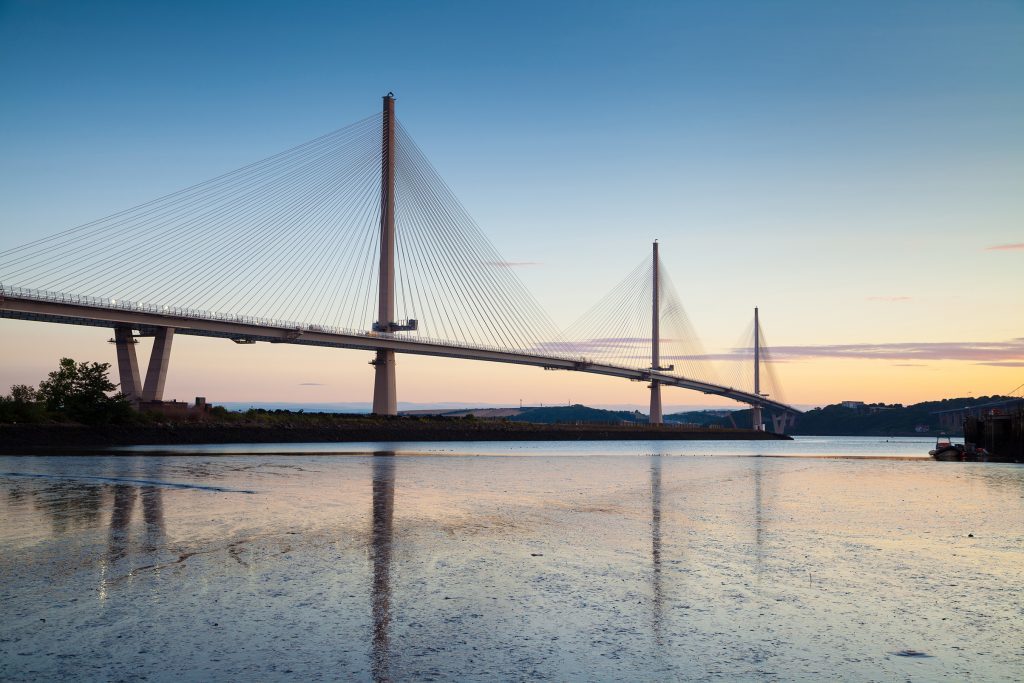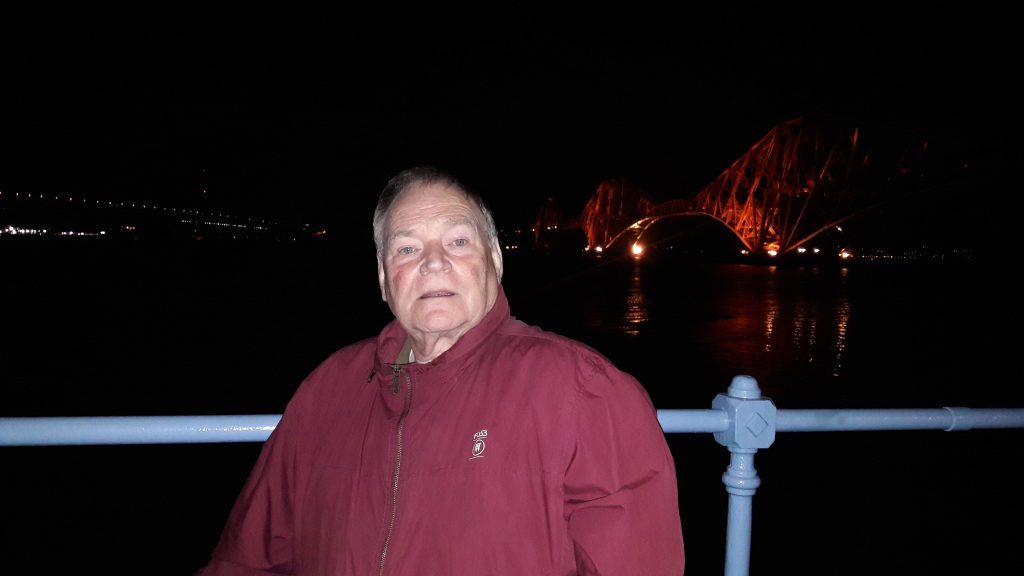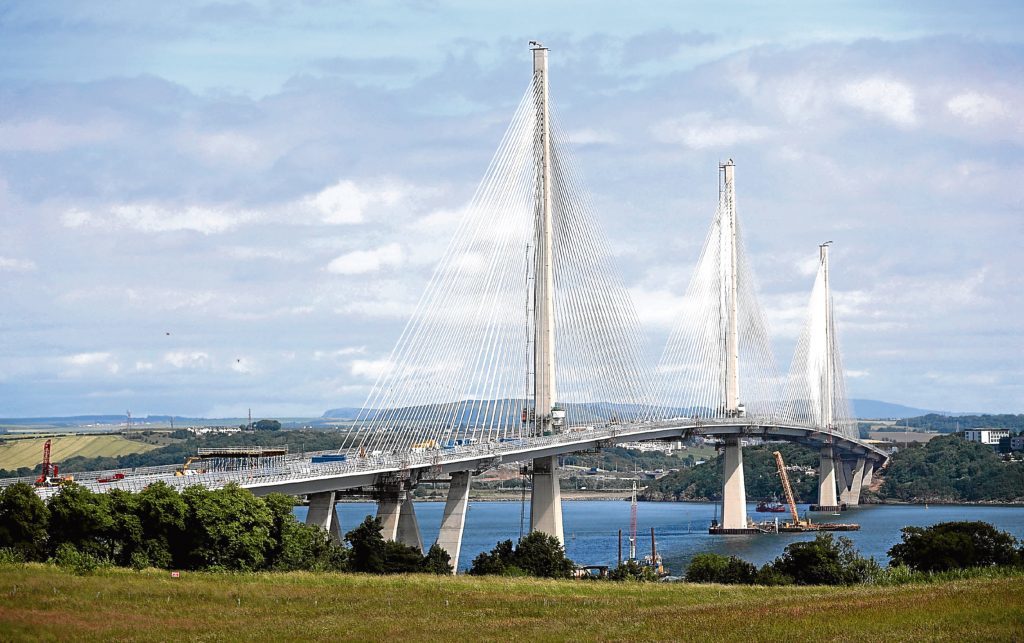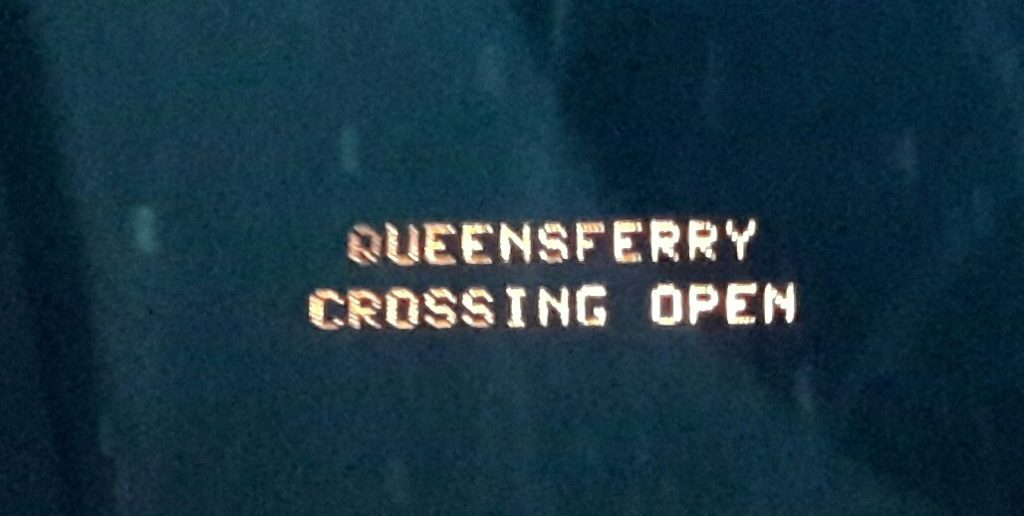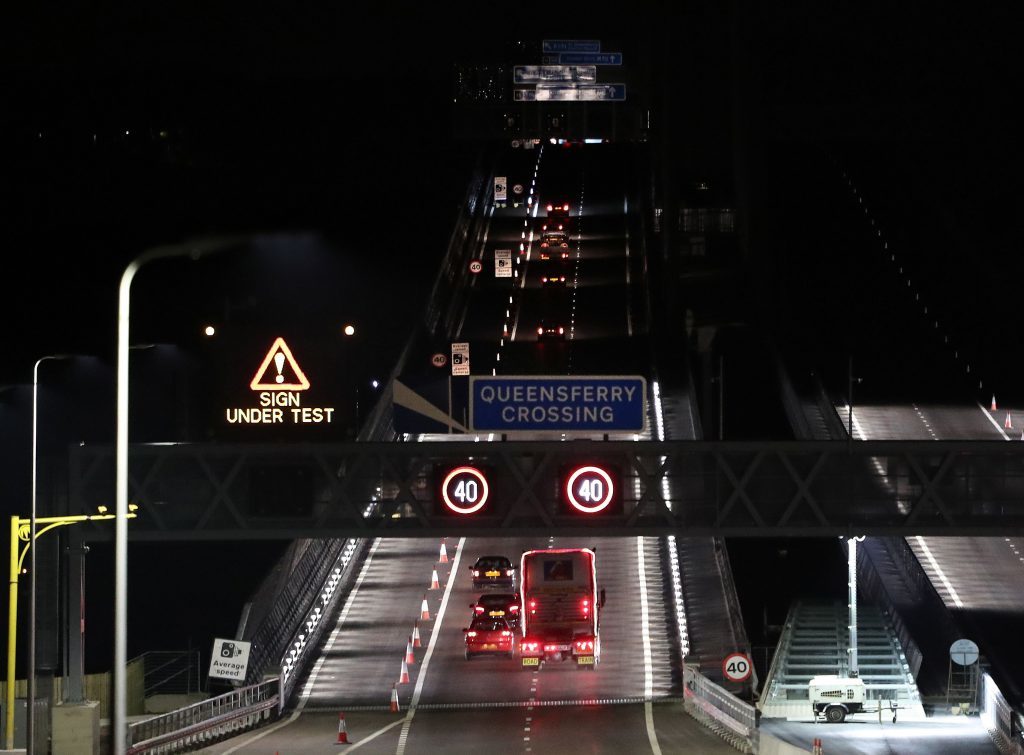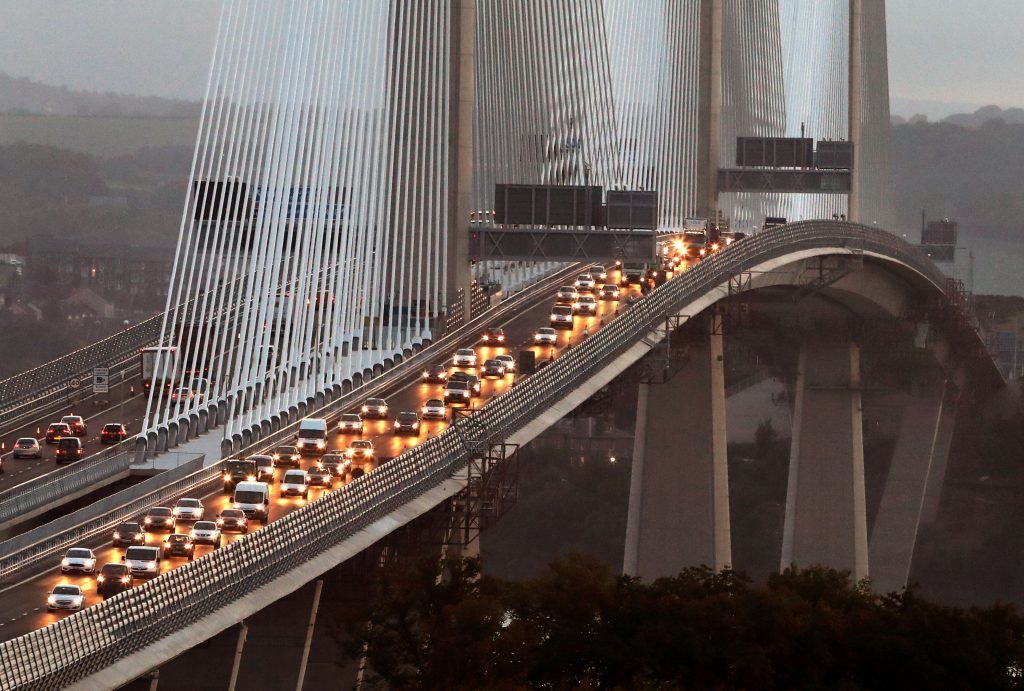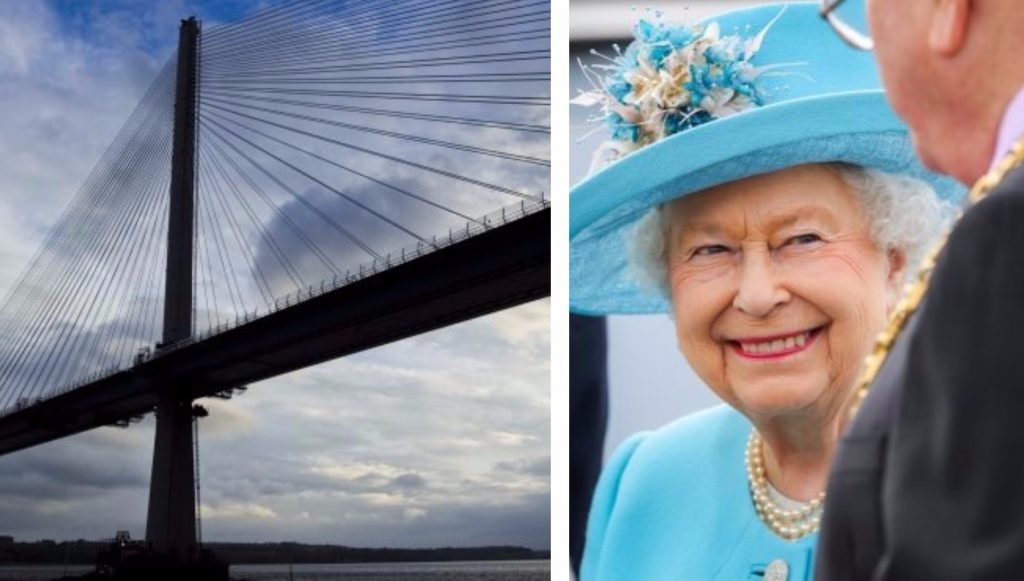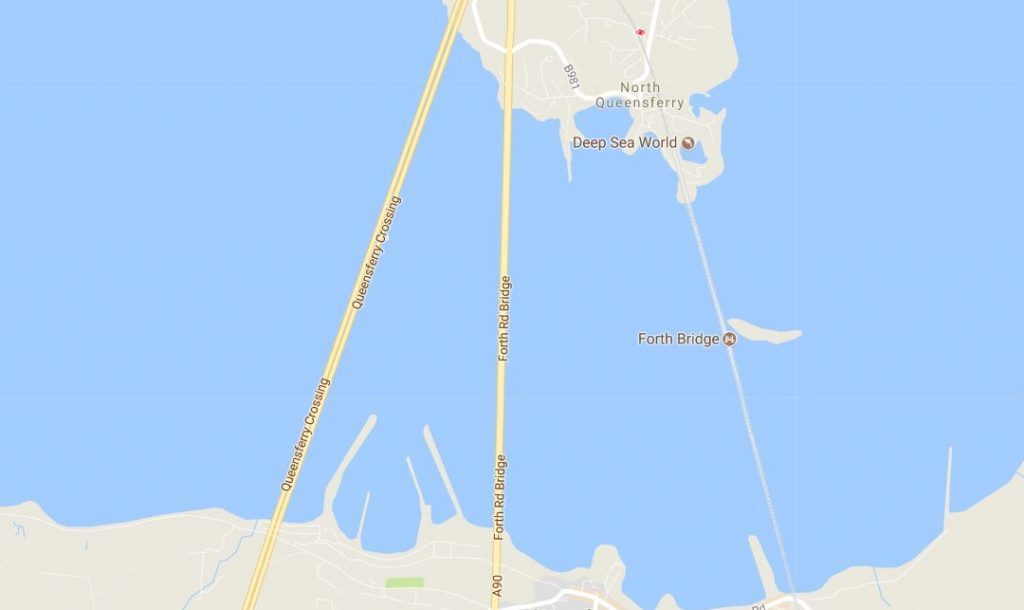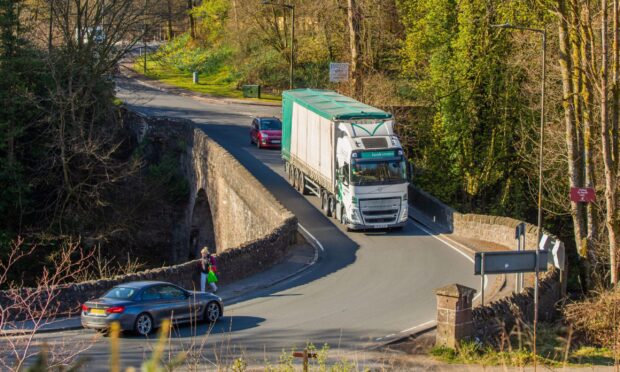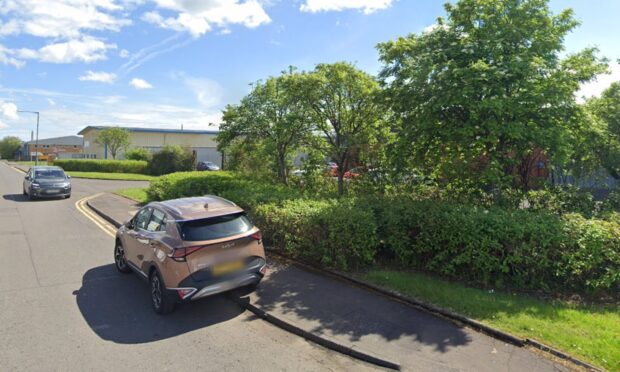A former Dundee student who became the first member of the public to cross the Tay Road Bridge when it opened 51 years ago helped write a new chapter of history in the early hours of Wednesday when he became one of the first motorists to traverse the new £1.35 billion Queensferry Crossing – thanks to The Courier.
Hugh Pincott, now aged 75, of Plymouth, made a special journey to Scotland for the opening and joined Courier features writer Michael Alexander to be one of the first to cross when the barriers were removed shortly before 1.45 am.
Mr Pincott was a chemistry student at Queen’s College, Dundee, when he made the crossing from Dundee to Fife on the day of the Tay Road Bridge’s official opening on August 18 1966.
He returned to the city he regards as his “spiritual home” last year to mark the 50th anniversary of the Tay crossing.
But when the retired BP chemist learned the details surrounding the opening of the Queensferry Crossing over the Forth, he could not resist making the long journey north by train and contacted The Courier for help to celebrate a “triumph for Scottish engineering”.
“I was a student at St Andrews and Dundee universities for seven years, and worked at BP’s Grangemouth Refinery,” said Mr Pincott.
“Long have I taken a detailed interest in the economy of the region.
“This new Crossing represents the consolidation of eastern Scotland – Fife in particular – as a hub for the commerce of the future.
“Electronics, information processing, and academic excellence have replaced mining and other heavy industry in terminal decline.
“The new Crossing is a triumph for Scottish engineering too: the longest triple-tower cable-stayed structure in the world.
“Wind-shielding built into the design will be a boon to anyone who has used the original bridge.
“This is an exciting development and I just had to be present and among the first people to use it.
“An opportunity like this doesn’t happen every day, or even every year.”
Transport Scotland deliberately kept details of the Queensferry Crossing’s opening low key as they did not want to attract “wacky racers” bidding to be the first to race across.
However, The Courier had heard whispers that for both safety and practical traffic management reasons the northbound Queensferry Crossing would open first, potentially sometime between 12.30 and 1.30am, with southbound traffic following suit around an hour later.
Traffic would be led across the bridge by a marked police car for safety reasons.
Due to the labour intensive nature of switching the traffic from the Forth Road Bridge to the new crossing, a great deal of coordination would be required between the bridge authority and police parties, it was understood.
As workmen put finishing touches to the road layout on both sides of the bridge, the only uncertainty at this stage of the evening was when exactly would the barriers be removed, and where was the best place to be for those trying to be one of the first?
As The Courier picked up Mr Pincott at Dunfermline Bus Station at 11pm, there was a sense of anticipation as we drove back towards the M90 to cross the old Forth Road Bridge and find a suitable position to wait on the Lothian side for the bridge to open northbound.
In the interests of fighting sleep deprivation, the hope was the wait wouldn’t be too long!
The main challenge meantime, was finding somewhere suitable to park up.
Unlike Mr Pincott’s experience of parking up on Dock Street to await the opening of the Tay Road Bridge in Dundee in 1966, parking up on a motorway was never going to be an option!
Embarking on a reccy mission down the A90 towards Edinburgh before turning around at Cramond, the still closed off slipway that would seamlessly transfer traffic onto the new bridge was awash with workmen, traffic cones and flashing lights at this stage.
After several runs over the course of several hours, we concluded that the best place to sit it out would be just off the South Queensferry to Linlithgow road. Here, around 30 other motorists clearly had a similar idea with people doing circuits of a roundabout above the new bridge with numerous camera people watching and waiting to record this moment in history.
Then, at 1.45am, that moment came. We became aware of a police car escorting traffic to our left and within seconds we had joined the promenade of around 50 vehicles making history as the green light was given to move slowly on to the bridge.
It took around five minutes to make the 1.7km crossing behind the police escort. First impressions were the smoothness of the carriageway, how difficult it was to see the bridge cables in the darkness and how the 3.6m high wind shear barriers all but block views from the side.
Tiredness was all but forgotten, however, as the elation of playing a small part in history was celebrated.
By the time commuters had their first experience of crossing the new bridge on Wednesday morning, it was already business as usual in more ways than one with the road fulfilling its function as a main arterial route linking Central Scotland.
Over the next few days, bridge operators will have an invaluable opportunity to “dry run” any traffic management issues before the bridge closes again on Friday to allow 50,000 lucky ticket holders the once in a lifetime chance to walk over the new bridge at the weekend.
The Queen will officially open the crossing next Monday – which also happens to be the 53rd anniversary of the day she opened the original Forth Road Bridge.
Then next Tuesday, an additional 10,000 people from local schools and community groups from both sides of the Forth will have the chance to walk onto the new bridge before it re-opens to motorway traffic the day after with no pedestrian access.
Transport Scotland says public transport will be diverted back on to the old Forth Road Bridge in around four or five weeks.
The Queen of crossings – very much a Scottish Government success story – is already fulfilling her function as a vital artery in Scotland’s road transport infrastructure.
Yet public fascination with her is likely to continue for a long time yet.
